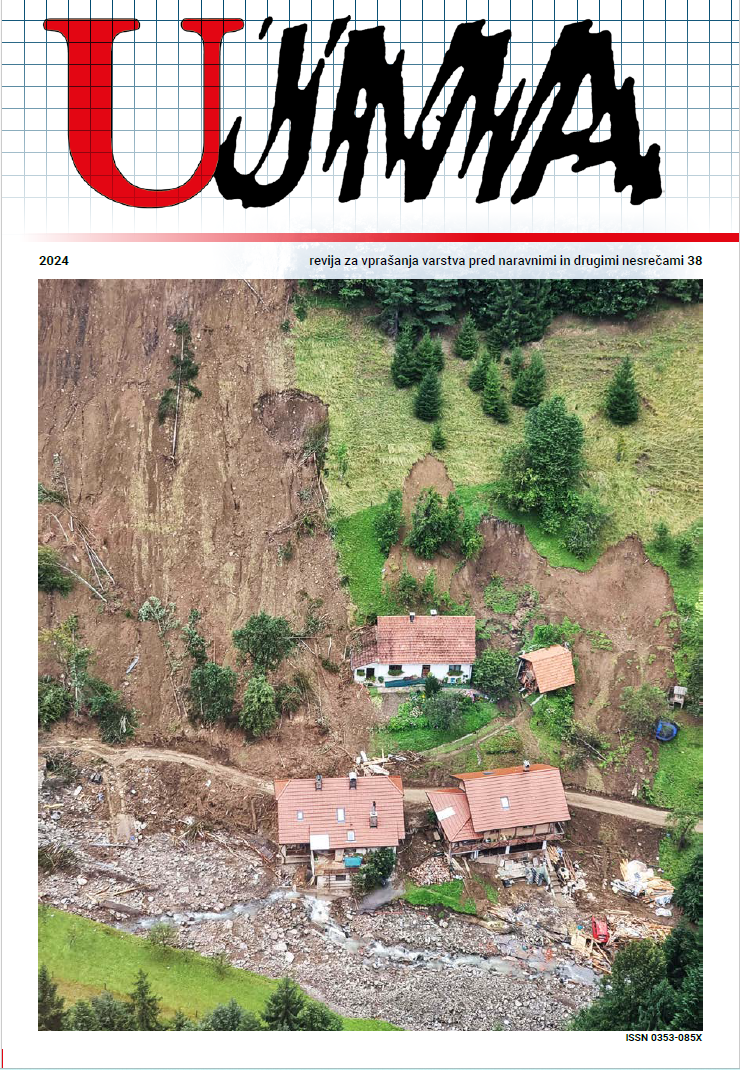THE USE OF T-CARDS IN THE INCIDENT COMMAND SYSTEM (ICS) AS A TRACKING TOOL FOR TASKS, RESOURCES AND COMMAND ORGANIZATION STRUCTURE, AND THE COLLECTION OF DATA
Abstract
In the Incident Command System (ICS), it is crucial to ensure the continuous monitoring of resource utilization during operational periods. At any given moment, it is necessary to know which resources are present, where they are operating within the command structure, their location in the response area, the tasks they are performing, the tasks yet to be completed, the tasks that have been completed, and any special equipment and materials they have received for their tasks. Additionally, it is essential to track data that allows for monitoring the costs of the response: work time and other data for personnel, vehicles, equipment, used materials, and services. One method for such monitoring is the use of T-cards for units and buildings or areas where a response is required. We first tested the use of T-cards in a complex international exercise. It turned out that their use allows for all this and more: properly organized T-cards provide commanders with a comprehensive view of the current state of response operations at a glance, quickly identifying where problems are concentrated and what resources are available to address them. The visual overview of the entire response is significantly better with T-cards than with computer screens in the field setting. The use of T-cards ensures accountability, which is a crucial responsibility of commanders.
References
Barut, D., 2023. Primer praktične uporabe sistema vodenja odziva na dogodke v občini Logatec. Ujma, 37, 234–239.
FEMA a - Federal Emergency Management Agency. ICS Resource Center. https://training.fema.gov/emiweb/is/icsresource/, 7. 4. 2023.
FEMA b - Federal Emergency Management Agency – Emergency Management Institut. Training. 2023. https://training.fema.gov/emi.aspx, 7. 4. 2023.
Jeraj, J., Novak, L., Kus, R., Stopar Kavčič, I., Gudžulić, Ž., 2022. Uporaba sistema vodenja odziva na dogodke (SVOD) v Mestni občini Ljubljana ob epidemiji COVID-19. Ujma 36, 333–345.
Jeraj, J., 2019. Sistem vodenja odziva na dogodke. V: Svete, U., Juvan, J., Jeraj, J., Tomazin, M., Krnc, M., Banovec, P., Klarič, M., Malešič, M., Šlebir, M., Kus, R., Bucik, V., Polič, M., Vavpetič, B., Prezelj, I., Barut, D., Fajfar, D., Sojer, B., Fink, A. Oblikovanje celovitega modela vodenja odziva na nesreče za vse ravni vodenja na področju zaščite, reševanja in pomoči v Republiki Sloveniji (končno raziskovalno poročilo, faza 4), Fakulteta za družbene vede, Ljubljana, 117–351. https://www.gov.si/assets/organi-v-sestavi/URSZR/Datoteke/Projekti/SVOD/Faza-4_compressed.pdf.
Pravilnik o vajah na področju varstva pred naravnimi in drugimi nesrečami, Uradni list RS, št. 104/08.
Svete, U., 2018. Informacija o projektu Oblikovanje celovitega modela vodenja odziva na nesreče za vse ravni vodenja – ICS URSZR. Ujma, 32, 158–160.
Svete, U., Juvan, J., Jeraj, J., Tomazin, M., Krnc, M., Banovec, P., Klarič, M., Malešič, M., Šlebir, M., Kus, R., Bucik, V., Polič, M., Vavpetič, B., Prezelj, I., Barut, D., Fajfar, D., Sojer, B., Fink, A., 2019. Oblikovanje celovitega modela vodenja odziva na nesreče za vse ravni vodenja na področju zaščite, reševanja in pomoči v Republiki Sloveniji (končno raziskovalno poročilo), Fakulteta za družbene vede, Ljubljana. https://www.gov.si/zbirke/projekti-in-programi/razvojno-raziskovalni-projekt-oblikovanje-celovitega-modela-vodenja-odziva-na-nesrece-za-vse-ravni-vodenja-na-podrocju-zascite-resevanja-in-pomoci-v-republiki-sloveniji/.
TIMS – Texas Incident Management Solutions. T-Card Guide. http://www.texasimt.com/forms/T-Card%20Guide.pdf, 7. 4. 2023.
Downloads
Published
Issue
Section
License
Copyright (c) 2025 Ujma

This work is licensed under a Creative Commons Attribution-NonCommercial-NoDerivatives 4.0 International License.
The articles are made available to the public under Creative Commons Attribution-NonCommercial-NoDerivatives 4.0 International (CC BY-NC-ND 4.0).


